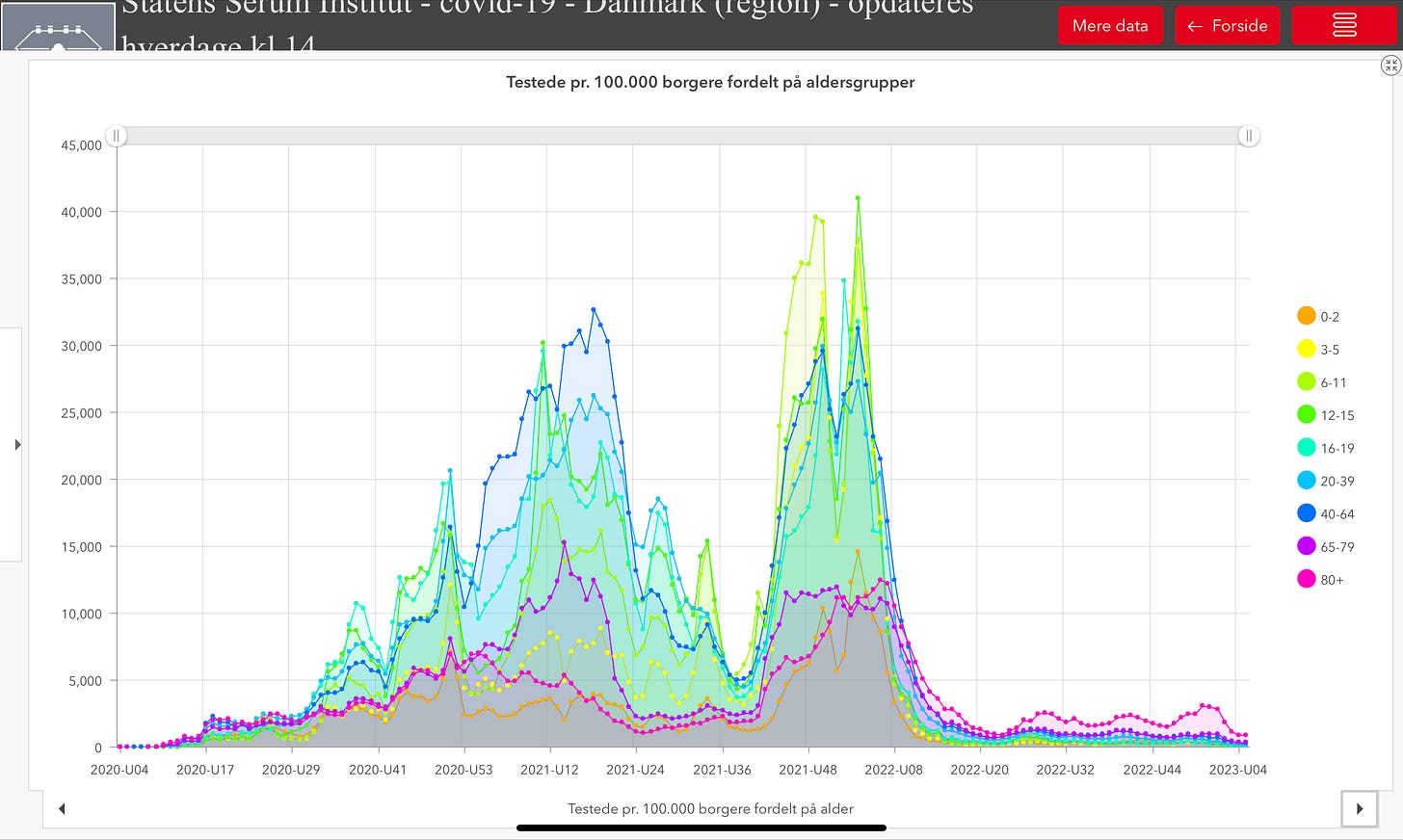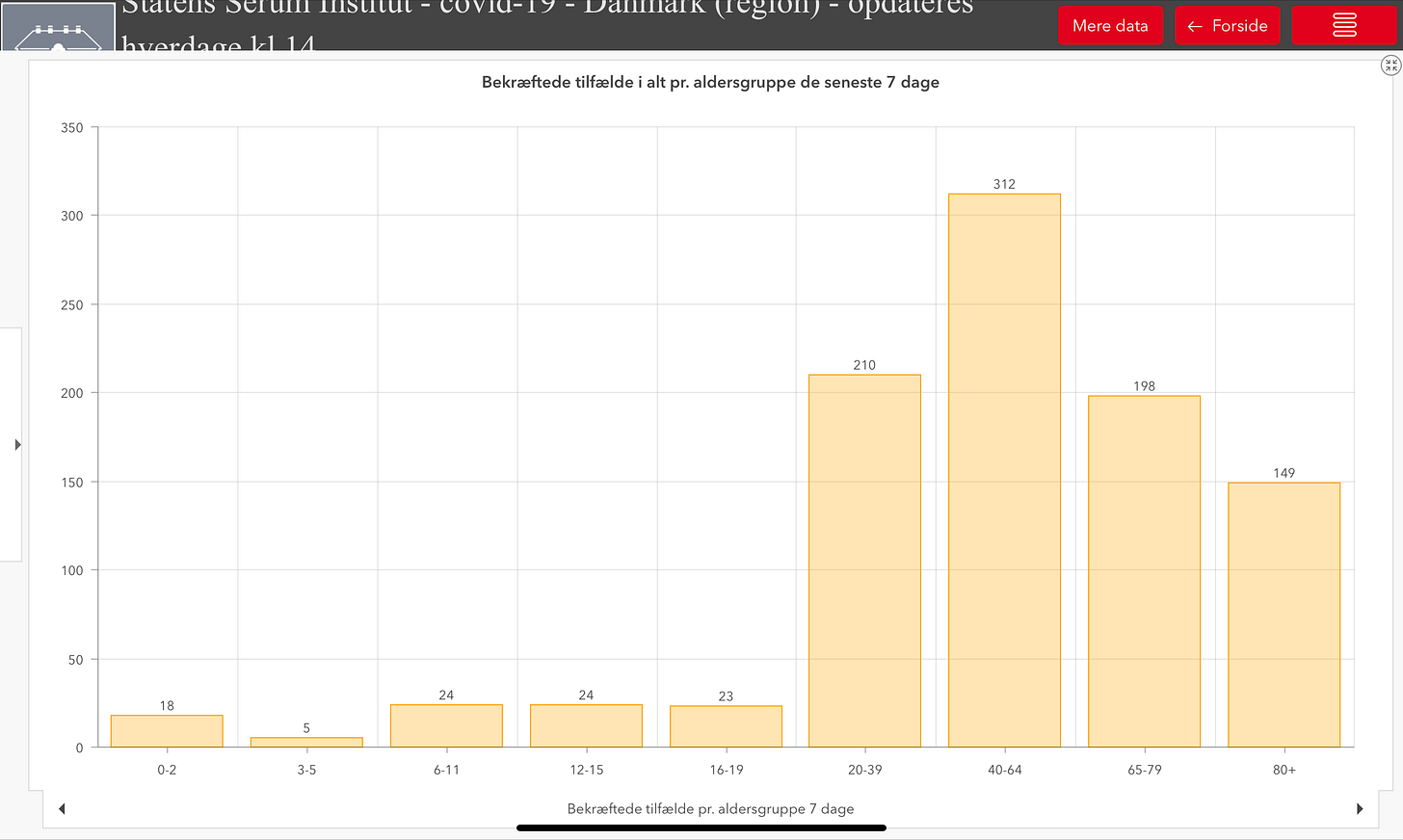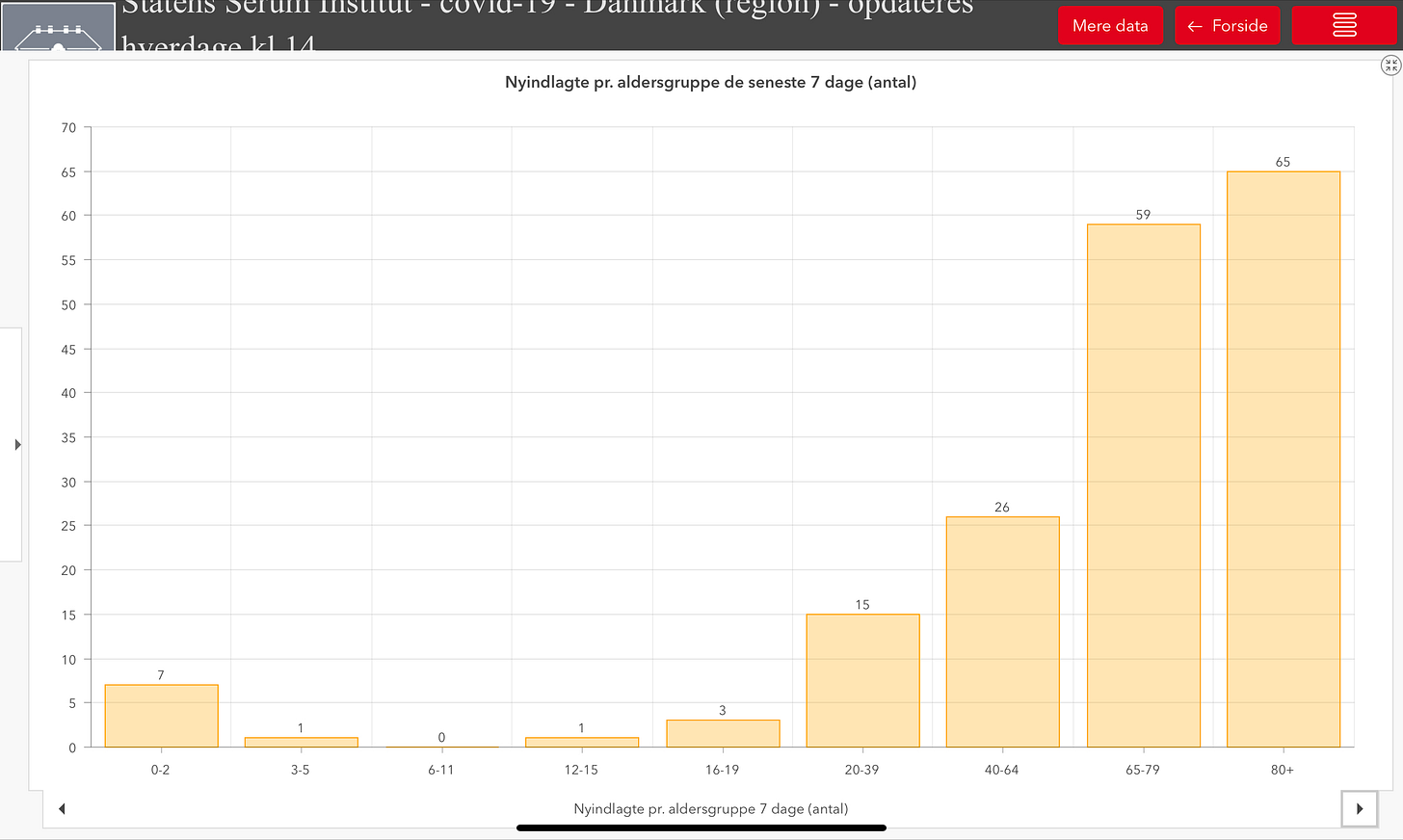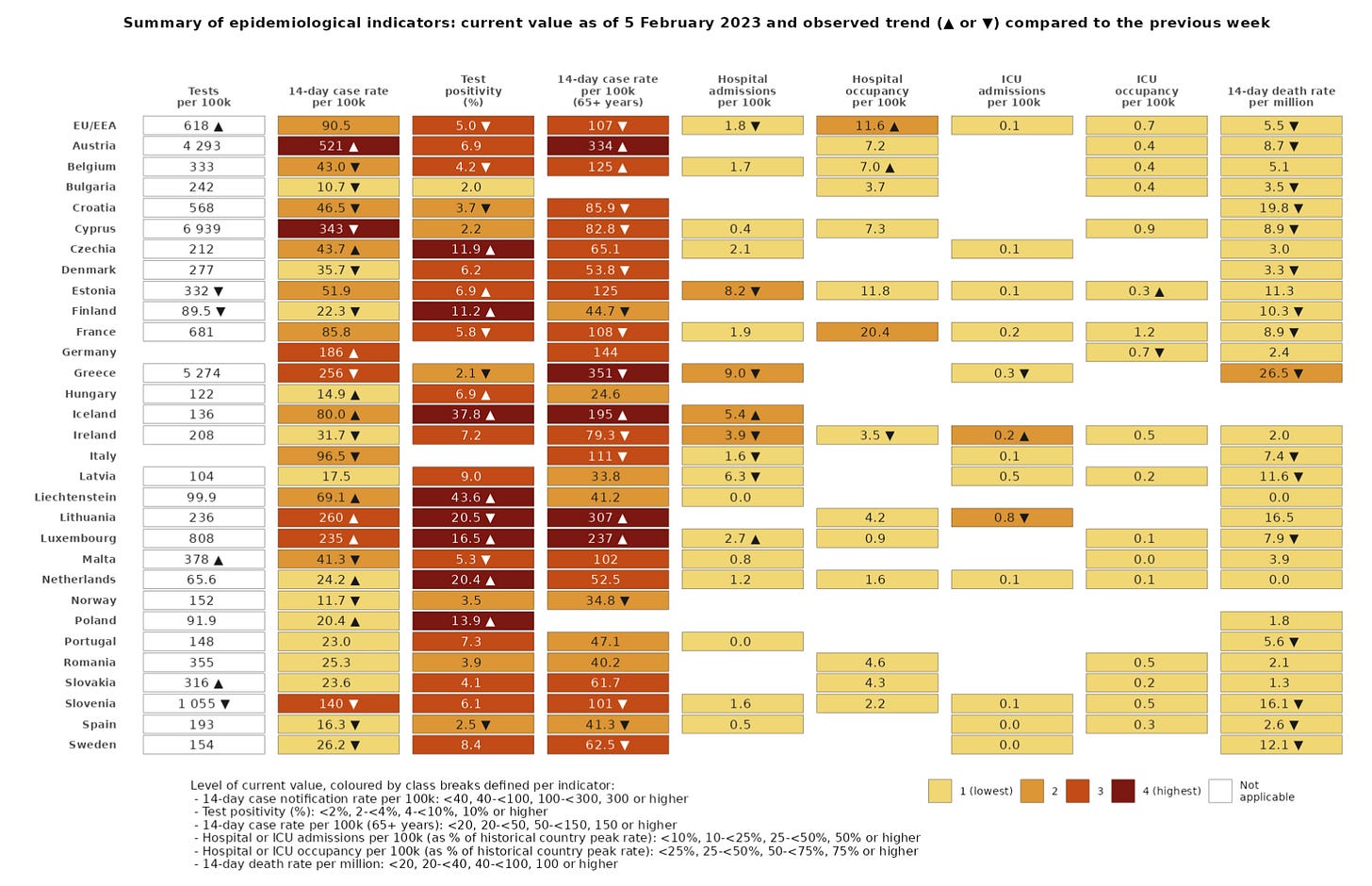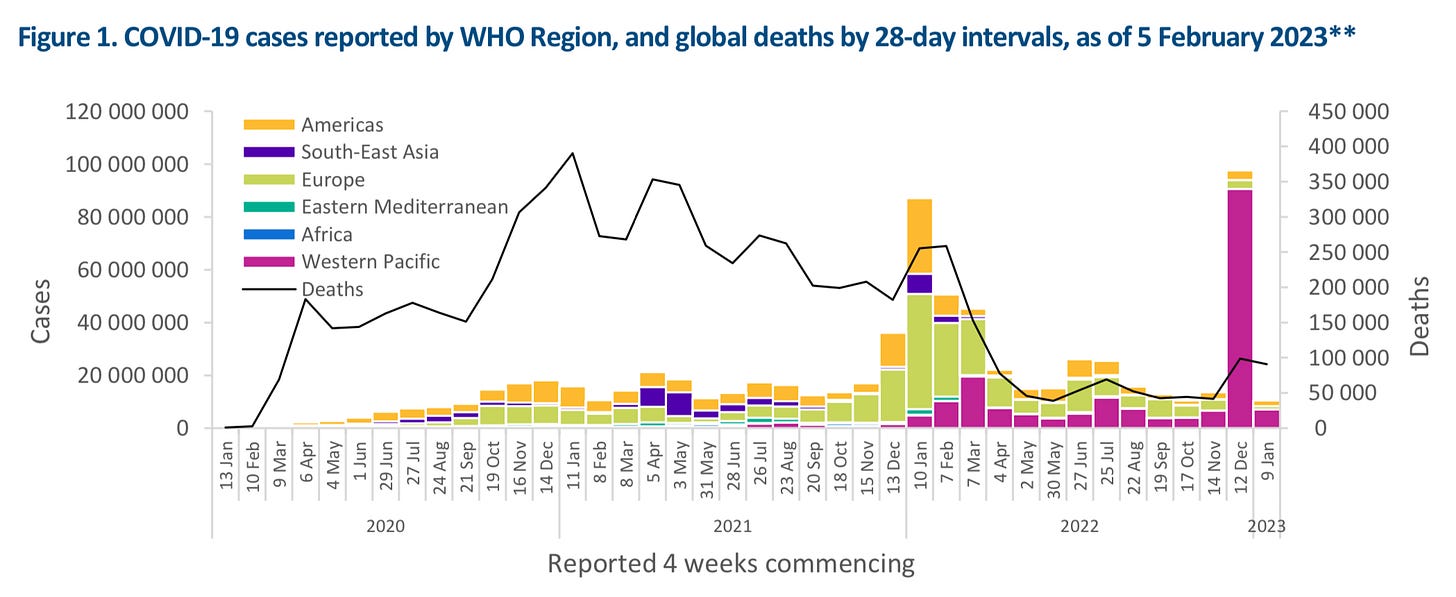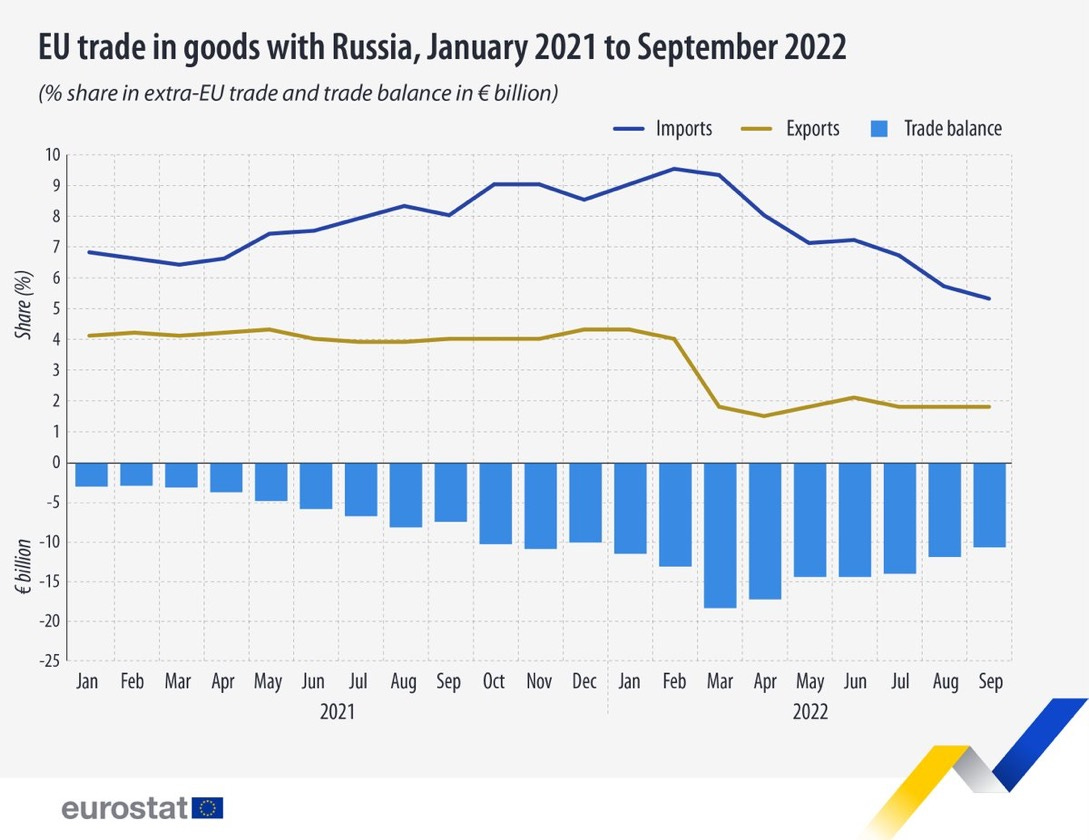Monday Morning News & Notes
That’s it for COVID PCR testing in Denmark. Global COVID deaths ease.
🦠Pandemic🦠
🇩🇰
Denmark’s once world-leading COVID PCR testing regime is being mothballed. Region Syddanmark says that national health authorities have decided that PCR testing sites in all five Danish regions must close by no later than March 31.
This will severely limit COVID reporting and mean the country will be virtually blind to pandemic developments and the spread of new variants.
Region Syddanmark CEO Kurt Espersen:
“It is gratifying that COVID occupies relatively little space in our society, here three years after the first Danes were infected with the disease. The national health authorities' assessment is that pandemic management is now entering a new phase. This means that the public PCR testing will be phased out by March 31, at the latest, and that we can now discontinue the regional testing effort, which began back in April 2020.”
COVID PCR testing centers in Region Syddanmark will close:
Kolding - February 28
Odense - March 30
Svendborg, Vejle, Aabenraa, Sønderborg, Esbjerg, and Ærø Hospital - March 31
After March 31, people will only be able to get a COVID PCR test from their family doctor or when admitted to a hospital if deemed necessary. Other than that, people will have to rely almost entirely on self-testing kits.
It is not just COVID testing either, as the window to get an influenza vaccination is about to close, and the COVID booster dose campaign is also about to wind down operations.
People over 50 had until January 15 to get their flu shot. Since then, influenza vaccinations have only been offered to pregnant women and those considered high-risk. But, as of February 28, they too will be out of luck.
With demand for COVID booster doses plummeting, Region Syddanmark will also close its COVID vaccination sites in Kolding and Sønderborg on February 28. At the same time, the sites in Odense, Vejle, Esbjerg, and Aabenraa will reduce opening hours to just one day a week. The vaccination center in Svendborg already closed at the beginning of the month.
“The region will still offer the first two vaccine doses after March 1, but it will be a somewhat smaller setup. From the beginning of March, it will be possible to book appointments at the vaccination centers at www.vacciner.dk in the cities of Odense, Vejle, Esbjerg, and Aabenraa approximately one day a week.”
The region notes that vaccination centers will still take walk-ins for those who still need a first or second dose. The region is also waiting on details from national health authorities about the next booster dose campaign, which will likely begin in the coming fall.
-
With much lower numbers, the overall trend in new infections over the last seven days continues in Denmark, with vulnerable seniors and those outside the 50 years old and older booster dose target group suffering the most coronavirus infections.
-
High-risk seniors also continue to bear the brunt of ending up in hospital after suffering a severe COVID infection. Over the last seven days, 70% of new pandemic-related hospital admissions were seniors over the age of 65.
-
The Danish government will lean more heavily on private healthcare facilities to help clear a major backlog of delayed and postponed surgeries and other treatments accrued during the COVID pandemic. Over the weekend, the government reached an interim agreement with the Danish regions as overall negotiations on an emergency plan to deal with the backlog continues.
The interim deal will reduce the cost to public taxpayers by allowing people to be treated by private healthcare providers. The deal will see the cost reduced by 12% until the end of this year, then a 10% reduction until June 1, 2025. It will also open the door for private hospitals to perform more specialized treatments.
Minister of the Interior and Health Sophie Løhde:
“It is the highest priority for the government that we shorten surgical wait times, and I am very happy that both Health Denmark and Danish Regions are prepared to take on the task. With the agreement, we ensure that private hospitals continue to play a central role and contribute to reducing wait lists. The prices for treatment in the private sector are reduced for a two-year period so that we get the most health for the money. And the private hospitals will at the same time be given the opportunity to carry out more specialized operations, which they are currently barred from.”
Danish Regions Chair Anders Kühnau:
“In recent years, private hospitals have been a great help in easing the pressure on our hospitals. Last year alone, close to 240,000 Danes were treated privately. When we now use them to such a large extent, we are happy that this is also reflected in lower tariffs so that we can afford to send more to the private hospitals than we would be able to without the agreement. It is an important supplement to everything that happens in the public hospitals so the Danes waiting for treatment have to wait as short as possible. I am very satisfied with that.”
As for what specialized treatments private healthcare providers will now have access to, that remains to be decided. The deal specifies a fast-track process to clear the matter up before the summer holidays.
The Danish government has tabled billions of kroner to tackle the backlog and get Denmark’s healthcare system back on track after the pandemic and last year’s nursing strike led to substantial wait lists.
-
After the COVID pandemic pretty much put a stop to international travel for the better part of two years, more and more people in Denmark are once again heading back to the airport. According to statistics from Copenhagen’s Kastrup International Airport, some 1.6 million people used the airport last month. That is almost double the passenger numbers from January of 2022.
Passenger Manager Susanne Rose Plum spoke to Ritzau:
“This is the highest number in three years. This corresponds to eight out of ten passengers returning compared to 2019. So we are really optimistic.”
That said, the airport still has some work to do to get back to pre-pandemic travel numbers.
🇸🇪
Healthcare workers and senior care home employees will no longer have to get tested for COVID in Sweden, even if they have coronavirus symptoms. The Swedish Public Health Agency is lifting the testing requirement on the health and senior care sector as of February 15.
Department Head Sara Byfors:
“During the recent COVID wave, we have seen that the testing of personnel has had a marginal effect in limiting the infection spread in these environments. Other respiratory viruses are also circulating that can cause severe illness in people who belong to a high-risk group. In order not to expose patients and residents to the risk of infection, it is especially important that healthcare and senior care staff think about staying at home in case of illness.”
Besides saying COVID testing is not effective, the healthcare agency also says it is too resource intensive.
Conversely, the agency also continues to recommend that patients and people receiving medical care continue to get tested if they are symptomatic. Ironically, the health authority adds, “testing can also be relevant for infection tracking.” It also warns that the risk of having a severe coronavirus infection rises with age and for people considered high-risk.
🇪🇺🦠
Europe continues to see the lowest COVID numbers in quite some time, but there are some signs that virus activity may be picking up again. The latest weekly pandemic assessment from the European Centre for Disease Prevention and Control shows a stable coronavirus situation across the EU. Overall, case numbers, hospitalizations, ICU admissions, and COVID deaths remain “at the lowest levels observed in the past 12 months.”
While coronavirus numbers remain stable, the pandemic continues to make its presence felt, especially in hospitals across Europe. Hospital capacity for people with severe infections in hospitals is 28% of the pandemic maximum, while ICU capacity is at 19%.
In week 5, there were 887 COVID deaths across 27 European countries
But, while the overall situation is vastly improved from a month or two ago, the ECDC notes some potential signs of trouble. At the country level, rising infection numbers among seniors over the age of 65 were registered in five of 28 countries (Austria, Belgium, Iceland, Lithuania, and Luxembourg). Ten out of 30 countries reported increasing COVID cases across all age groups. Five of the 24 countries reporting hospital data saw general or intensive care admissions increase (Iceland, Luxembourg, Ireland, Belgium, and Estonia).
On the vaccination front, just 35% of vulnerable seniors over the age of 60 in the EU have a 2nd booster dose and the protection it offers.
With just seven countries doing COVID testing and sequencing in numbers large enough to derive any useful data from, the BQ.1 variant remains dominant, coming back in 42.6% of cases. The BA.2.75 variant was responsible for 22.9% of infections, while the XBB.1.5 was found in 7.4%.
🌏🦠
Global COVID deaths finally began to ease, according to the latest weekly pandemic update from the World Health Organization. Over the last 28 days, there were 10.5 million new infections, which is a decline of 89%. Over the same period, the coronavirus claimed over 90,000 more lives, a slight decrease of 8%.
“Current trends in reported COVID cases are underestimates of the true number of global infections and reinfections. This is partly due to the reduction in testing and delays in reporting in many countries. Data presented in this report may be incomplete and should, therefore, be interpreted with caution.”
Of the six WHO global regions, COVID deaths increased in three and decreased in the other three. The Eastern Mediterranean saw the highest increase in fatalities (+45%). While deaths also jumped in Africa (+21%) and the Americas (+14%). In South-East Asia, deaths fell (-61%) as they also did in Europe (-38%) and the Western Pacific (-3%).
The WHO says the Western Pacific Region has been driving global numbers, most notably in China, where cases plummeted (-96%), but another 40,812 lives were snuffed out (-11%). In both cases, take the numbers with a grain of salt.
Elsewhere, the United States saw COVID deaths leap, with another 15,294 Americans dead (+40%) while it registered 1,328,654 infections (very underreported). Japan also remains a concern, with over two-million new infections and 9,874 fatalities (+28%). The United Kingdom also recorded another 2,671 coronavirus fatalities (-32%).
Over the latest 28-day reporting period, the global health agency says there were just 70,276 positive sequenced tests reported to the global GISAID registry. Omicron variants of concern accounted for 99.6% of sequences reported. The WHO says while BA.5 and its sub-variants remain dominant globally (53.9%), those numbers are in decline while recombinant variant-related infections are growing. Specifically, XBB.1.5 is seeing growth, especially in the United States.
Topping its concern list, the WHO says, are the BF.7, BQ.1, BA.2.75, and XBB variants
🇳🇴
The Norwegian Institute of Public Health is looking to take advantage of a flood of respiratory viruses to test the effectiveness of face masks. The institute is looking for 5,000 volunteers who will wear a mask for two weeks while they are out in public and commuting to and from work.
The NIPH Center for Research on Epidemic Measures Manager Atle Fretheim:
“In the last three years, several measures have been introduced, often based on a thin knowledge base, which has a major impact on people and business. If we get another pandemic, it is essential that we know more about how measures such as face mask requirements work.”
It is a randomized trial, so half the group will mask up while the other half won’t. After the two-week trial, participants will fill out a questionnaire asking if they have any symptoms of a respiratory infection.
Project Manager Runar Solberg:
“By comparing the incidence of respiratory infection in the two groups, we can see how well a mask protects.”
⚡️Energy Crisis⚡️
🇩🇰
Inflation in Denmark dipped slightly last month, but consumer prices are still 7.7% higher year over year.
Danske Bank Chief Analyst Louise Aggerstrøm says the good news is that inflation-driven price increases appear to have slowed. But, she adds, the question remains whether high consumer prices on food, for example, will return to a more ‘normal’ price quickly enough.
“I would have thought that inflation would fall a bit more. It is only when we get inflation really down and, among other things, also get interest rates down that we will emerge on the other side of this crisis.”
🇩🇰/ 🇪🇺
With shockwaves still rolling through Denmark’s green energy sector, Prime Minister Mette Frederiksen met with EU Commission President Ursula von der Leyen late last week after Denmark suddenly suspended the offshore wind turbine open door scheme. The Danish Energy Agency had assessed the scheme violated European Union rules on state aid.
Coming out of the meeting, Mette Frederiksen said there is “complete agreement” between Denmark and the EU to find a solution as quickly as possible.
“We need to speed up the green transition, both in Denmark and in Europe. And there, you just have to say that the North Sea and our offshore wind journey is one of the most important pieces in that transition. So I am very confident that we can find a solution as soon as possible.”
However, Frederiksen wouldn’t share any details about what “as soon as possible” meant regarding a specific timeline.
The Danish open-door scheme allowed companies to set up offshore wind turbines in areas not designated as state-controlled.
🇫🇮
Wind energy production in Finland last month broke records. Finnish Energy says that 1,900-gigawatt hours of electricity were produced last month, shattering the previous monthly record of 1,450 GWh. It says significant investments made in the wind power sector last year resulted in greater capacity, which helped. Finland’s national power grid operator, FinGrid, says strong winds blowing across the country also helped drive record power production numbers.
🇷🇺/ 🌎
Russia is trying to punch back against western sanctions on its oil and gas industries, which include a price cap on Russian oil exports. Moscow says it will “voluntarily” cut its oil production by 500,000 barrels per day.
Energy news agency Argus reports that the chances of OPEC tabling a commensurate response to Russia’s cut are remote.
The move by Russia did prompt a rise in oil prices going into the weekend. But it’s also worth mentioning that Russia’s oil production is already well below quota by about 700,000 barrels a day. Argus also notes that the European Union’s ban on seaborne Russian oil shipments and its price cap on Russian crude “appear to have had little impact on production.” Although, it adds that the voluntary Russian cut in oil production may be a preemptive move by Moscow over sanction impacts that it is anticipating on its side.
This is a view shared by Alexei Gromov from the Moscow-based Institute for Energy and Finance Foundation. He says the 500,000 barrel a day production cut should be viewed as the first effect of the ban on Russian oil products.
“The oil products embargo will be the most serious challenge of all sanctions targeting the Russian energy sector, while the embargo on Russian supplies is a much bigger problem than price caps."
🇳🇴/ 🇪🇺🇬🇧
Over the weekend, gas prices rose across a swath of Europe due to unplanned outages at two major Norwegian gas fields. The shortages directly impacted gas supplies to the European Union and the United Kingdom, with gas flow reduced by almost 20%. The shortage causes natural gas prices to rise in the UK, Germany, Belgium, Netherlands, and Poland. It also provided a concerning emphasis on how reliant Europe is now on Norwegian gas after Russia weaponized its gas exports and turned off the taps to Europe.
🇺🇦/ 🇷🇺 War
🇬🇧/ 🇺🇦 🇷🇺
Russia is suffering huge casualties on the battlefield in Ukraine as it looks to overwhelm Ukrainian defenses with waves of poorly armed and sparsely trained soldiers.
Per the UK Ministry of Defense on Sunday morning:
“In the past two weeks, Russia has probably suffered the largest number of losses since the first week of the invasion of Ukraine last year.”
According to British information, the Ukrainian army is also suffering heavy losses at the moment.
🇫🇮 🇸🇪/ NATO
Finland’s President is circling the dates of July 11th and 12th on his calendar. That is the date of the NATO summit in Vilnius, Lithuania and when Sauli Niinistö believes that Sweden and Finland will officially join NATO.
Niinistö told Finnish news agency STT that if the two Nordic nations aren’t full NATO members by then, then it raises serious questions about how feasible it will be to join later.
“This [drawn-out process] has already been a problem for NATO. It has also surprised member countries.”
Turkey has refused to ratify the ascension protocols for either Scandinavian country as Turkish President Recep Tayyip Erdogan continues to pick fights with Sweden.
“Bilateral talks between the United States and Turkey could help move things along.”
The Finnish President also insisted that Finland and Sweden must join NATO together, even as discussions in Finland have turned to the possibility of the two countries joining NATO at different times. The Finnish parliament decided on Friday that legislators can forge ahead with NATO legislation even though Hungary and Turkey have yet to ratify it. All other 28 NATO member countries have delivered lightning-fast ratification votes.
-
Appearing on Yle Radio 1 in Finland on Sunday, Prime Minister Sanna Marin fielded questions including about the status of the country’s NATO application. Marin reiterated that Finland plans to join the military alliance in lock step with Sweden.
"We can't influence the decisions of Turkey and Hungary. We've told them that we [Finland and Sweden] want to join NATO at the same time. It would be problematic from the perspective of NATO's defence planning if Finland joined first, leaving Sweden to wait in the lobby.”
Marin also added that her government hasn’t made a decision yet on donating Leopard tanks to Ukraine.
🇫🇮/ 🇺🇦
Finnish Prime Minister Sanna Marin met with Ukrainian President Volodymyr Zelenskyy late last week. Marin said a “small group” took part in the meeting to discuss further efforts to help Ukraine
“Finland has said that as long as it is needed, we are ready to help.”
Marin says she believes discussions will begin on sending more heavy weapons to Ukraine in the weeks and months ahead, including the possibility of donating fighter jets.
“We know, for example, the need for air defense and anti-aircraft systems. And in terms of fighter jets, there will be discussions."
She wouldn’t commit to Finland dispatching fighter jets to Ukraine but wouldn’t rule it out, either.
🇩🇰 🇸🇪 🇵🇱/ 🇺🇦
Sending fighter jets to Ukraine is a matter of some debate in Europe after Ukrainian President Volodymyr Zelenskyy made a trip to the UK and the European Union parliament in Brussels to plead for more modern war planes.
Danish Prime Minister Mette Frederiksen wouldn’t commit to donating fighter jets to Ukraine but she also didn’t expressly rule it out either.
“We just donated a lot of artillery. And so we are in continuous deliberation about what is the right next step. Everything between heaven and earth [was discussed] with the Ukrainians. I am not going to go into specific donations because now we have given the Ukrainians a lot over the course of a year, and we must continue to do so. They must win this war, and that requires us to constantly, also from the Danish side, to consider how we can best help. And with what, we will help with.”
Frederiksen noted Denmark is working with other European countries to get Leopard tanks to Ukraine.
“Now we are in the process of getting a lot of tanks ready to be sent off. We just donated all our artillery. And then we are in ongoing deliberations about what is the right next step.”
Polish Prime Minister Mateusz Morawiecki said last week that Poland supports the donation of fighter jets to Ukraine, but it “will not be the first to hand over fighter planes.”
The Netherlands and France have both indicated cautious support for donating fighter jets.
But Sweden has ruled it out entirely. Prime Minister Ulf Kristersson told the news agency TT there is a fine line in donating weapons to Ukraine.
“So there are limits in a war before you actually become part of the war.”
🌏/ 🇷🇺
Russian and Belarusian athletes have no place at the 2024 Olympic summer games in Paris. That is the message from 34 countries whose representatives met online late last week. Ukrainian President Volodymyr Zelenskyj also addressed the group during the meeting. Government ministers from USA, Germany, France, Great Britain, Japan, Norway, and others attended the meeting remotely.
Norway's Minister of Culture, Anette Trettebergstuen, spoke to NTB news agency and said she does not expect the IOC to dare to welcome Russians in Paris any longer.
“Zelenskyj received full support from more than 30 ministers responsible for sports from most of Europe and also elsewhere in the world.”
The ministers attending the meeting have signed a letter to the International Olympic Committee opposing the inclusion of Russian and Belarusian athletes to the games under any conditions. The IOC is investigating the possibility that Russians and Belarusians can participate under a neutral flag and various restrictions.
IOC President Thomas Bach doesn’t seem particularly impressed with the growing opposition. He spoke with AFP and basically said that the various governments need to mind their own business.
“It is not up to governments to decide who can participate in which sports events because that would be the end of international sports competitions and the World Cup and Olympics as we know it.”
🇩🇰/ 🇺🇸
Denmark’s Foreign Affairs Minister Lars Løkke Rasmussen is in the United States today, to meet with his American counterpart, Antony Blinken. While a number of issues are on the table, Chief among them will be continued support for Ukraine.
Lars Løkke Rasmussen in a press release:
“The USA is Denmark's most important ally. And the importance of the close Danish-American cooperation on security policy cannot be overestimated in these times. The West's continued support for the Ukrainian freedom struggle will be at the top of the agenda. The USA's major involvement in Europe is absolutely crucial for Ukraine and for European security.”
🇩🇰/ 🇺🇦/ 🇷🇺
On February 24, the Danish parliament will hold a special service at Holmen’s Church in Copenhagen to mark the one-year anniversary of Russia’s invasion of Ukraine.
Speaker of the Danish Parliament Søren Gade:
“The parliamentary parties stand together in solidarity with Ukraine. The war affects us deeply because it is an attack on fundamental values such as freedom, democracy and national self-determination. Therefore, Ukraine's fight for freedom is also our fight.”
The one-hour service will begin at 10 am.
Along with the Prime Minister, members of parliament, and the Ukrainian Ambassador Mykhail Vydoinyk, members of the Danish Royal family will also attend.
Denmark’s national media outlet DR will also mark the occasion with a series of programs in the days leading up to the 24th.
🇺🇸/ 🇵🇱 🇺🇦
United States President Joe Biden is headed to Poland, where he will mark the one-year anniversary of Russia’s invasion of Ukraine. Biden will be in Poland on February 20 to 22. Biden will also meet with Polish President Andrzej Duda and other allies to discuss the situation in Ukraine.
🇸🇰/ 🇺🇦
As Ukraine pushes for an international coalition to begin donating newer fighter jets, Slovakia has indicated it is ready to have talks to supply MIG-29 fighters to the embattled country. Slovakian Defense Minister Jaroslav Nad told Reuters the country no longer needs the planes, and giving them to Ukraine is certainly an option. But no final decision has been made yet.
-
Slovakia has dispatched 1,500 soldiers to the Ukrainian border to help with the flow of Ukrainians fleeing the war.
🇨🇭/ 🇷🇺
Swiss bank Credit Suisse has frozen $19 billion (USD) in Russian assets since sanctions began being piled on Russia over its invasion of Ukraine, according to the SonntagsZeitung newspaper. That equates to about one-third of all declared Russian holdings in Switzerland. It reports the frozen money includes funds from the Russian Central Bank and the Russian state itself.
🇪🇺/ 🇷🇺
Russia’s invasion of Ukraine continues to sideswipe trade with the European Union as the EU responds with a growing number of import and export restrictions. While sanctions have been steadily piling on for a year, European statistics agency EuroStat says it is just now the impacts are becoming “particularly visible.”
Russia’s share in EU imports between February and September tumbled from 9.5% to 5.3%. Going the other way, EU exports to Russia dropped from 4% to 1.8%. The EU’s trade deficit with Russia has fallen like a stone from €18.1 billion in March of 2022 to €10.5 billion by September.
Specifically, the declines are most noticeable with coal, which saw the biggest drop, followed by natural gas, and petroleum oil.
NATO
It looks like NATO will need to fill the position of Secretary-General this fall. Jens Stoltenberg has held the position for almost nine years and has had his term extended three times. But he is not going to make it four.
NATO spokeswoman Oana Lungescu spoke to DPA:
“The Secretary-General's term ends in October this year, and he has no intention of seeking another extension of his mandate.”
The 63-year-old is a former Prime Minister of Norway and was named as the new Norwegian central bank chief last year. He is due to begin his new job this December.




